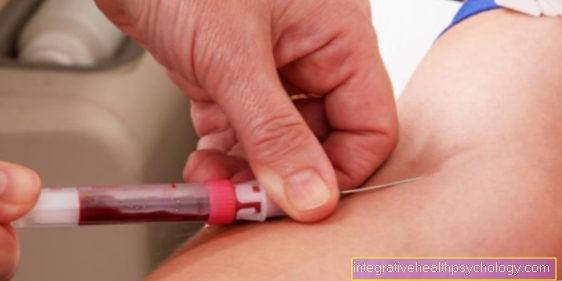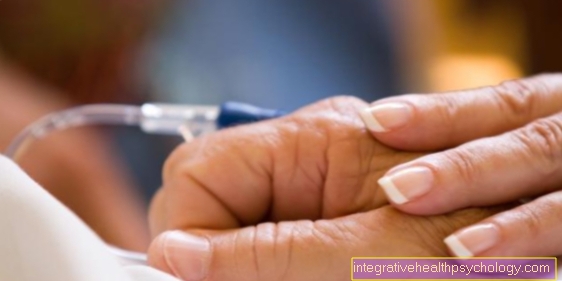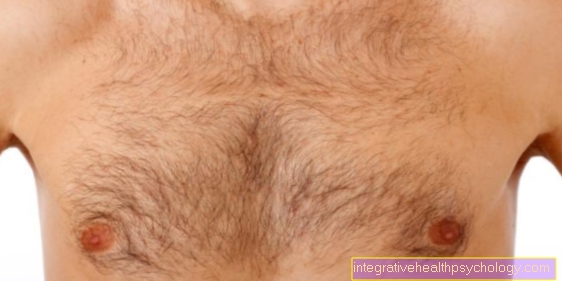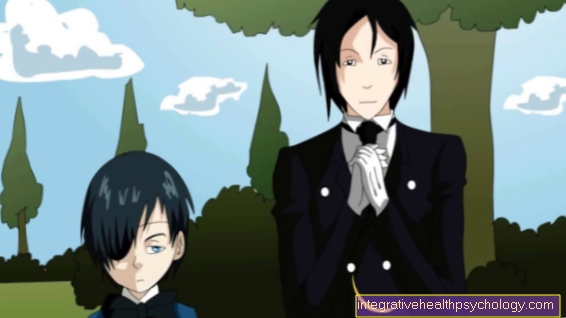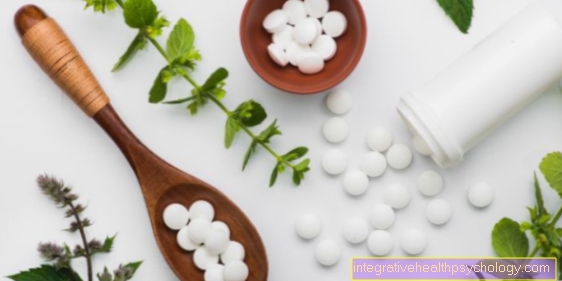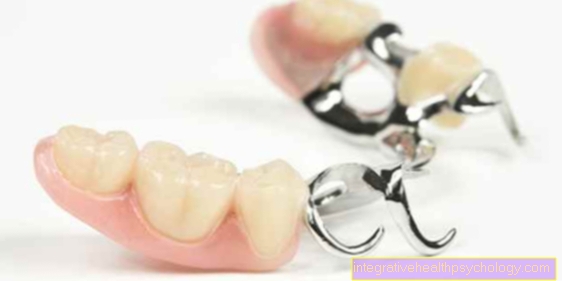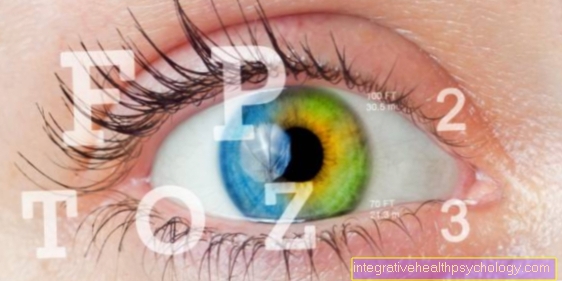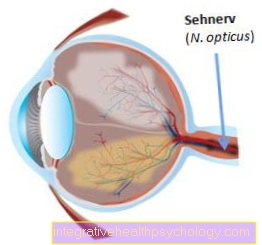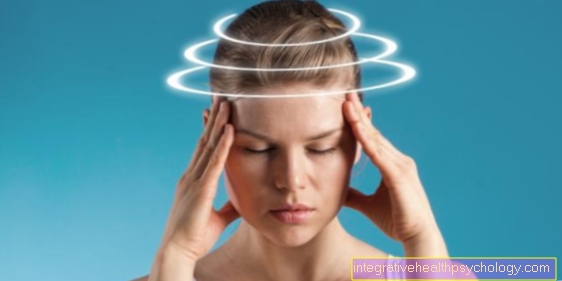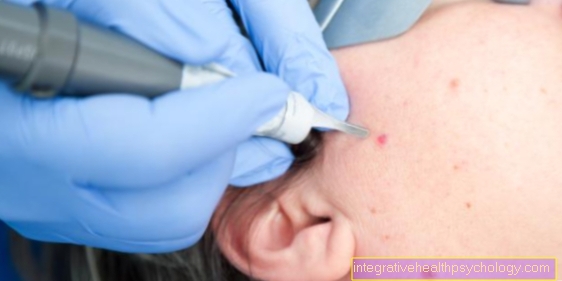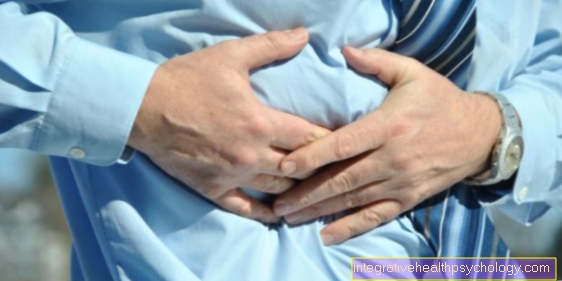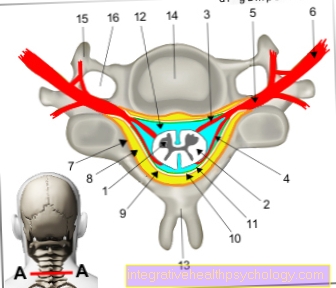Duration of hot flashes
introduction
Hot flashes are complaints that can be traced back to different causes. Usually these are hormonal changes in the body that influence temperature regulation and thus cause hot flashes.
Typically, hot flashes occur during the so-called climacteric, so women are affected by menopause. With them, the regulation of sex hormones changes. The hot flashes usually last a few minutes, but they can be very common.
Menopause lasts between five and ten years, after which the hot flashes usually go away. Hormonal diseases such as thyroid disorders can also cause hot flashes.
Hyperthyroidism (overactive thyroid gland) leads to an increased secretion of thyroid hormones, which increases the metabolism so that the body produces more heat. In this case, the hot flashes occur as long as the thyroid function is not properly adjusted.
Also read the article on the topic: Hot flashes without menopause
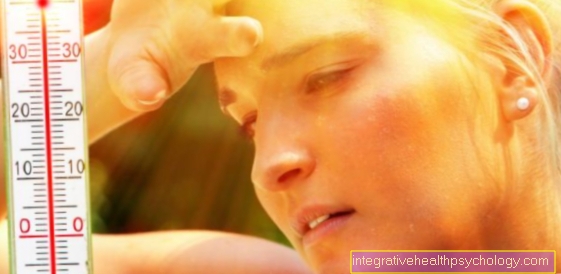
What has a positive effect on the duration of hot flashes?
The duration of hot flashes can often not be well controlled. Many women try different herbal products during menopause.
However, most of them have to experiment a bit until they have found a suitable remedy that shortens the hot flashes. Often, however, the herbal remedies are sufficient to relieve the symptoms of hot flashes.
Plants such as lady's mantle, yarrow and black cohosh are used as possible active ingredients.
Red clover and soy can also have a positive effect on the duration of hot flashes. In addition, many sufferers like to use Schüssler's salts and pomegranate against the symptoms.
Since the hot flashes occur due to the changed temperature regulation, strong heat or cold applications can also alleviate or even shorten the symptoms. Regular saunas and Kneipp baths are helpful for hot flashes.
Hormone replacement therapy drugs can also be used for particularly severe symptoms. These improve and shorten the symptoms, but are associated with an increased risk of breast cancer, for example, and should therefore only be used after careful consideration.
Read more about the here Hormone replacement therapy in menopause
If the hot flashes are based on another disease (thyroid gland, hypoglycaemia in the case of diabetes, allergy, etc.), this disease can be treated with medication if necessary.
Do you suffer from other unpleasant consequences of menopause? - Then read the following article: Medication for menopause
Do you suspect the thyroid is causing your hot flashes? - Then read our article on the: Hyperthyroidism
What negatively affects the duration of hot flashes?
Hot flashes are negatively affected by a variety of factors.
Above all, this includes those behaviors that increasingly direct the body's temperature regulation towards heat production.
Food and beverages play the biggest role in this. For example, in addition to increasing alertness, caffeine can also increase heat production in the body, and heartbeat and blood pressure are increased.
This can negatively affect the duration of hot flashes, so the consumption of coffee and black tea should be reduced or avoided completely. Alcohol can also worsen the symptoms, as alcohol reduces the perception of cold.
Hot foods and drinks, meals that are heavy on the stomach, and spicy foods can make hot flashes longer. You should therefore avoid such foods, especially in the evening.
The hot flashes are also caused or made worse by warm clothing and a warm sleeping environment. The general lifestyle can also have a negative effect on the duration of hot flashes: a lack of exercise and being overweight have a negative effect, while exercise in the fresh air improves the symptoms.
This can be done to end the hot flashes
To change or shorten hot flashes, many women use herbal remedies. But small changes in other places can also improve and shorten hot flashes.
Clothing, for example, plays an important role. You should therefore wear more clothing made of natural fibers, as these are more breathable than artificial materials and thus prevent heavy sweating.
The onion skin principle is also suitable for hot flashes. Several thin pieces of clothing can be worn on top of each other, so that one or the other layer can be taken off and on again depending on the perceived temperature.
Diet also plays an important role in the development of hot flashes. Light meals in particular shorten hot flashes because the body is not additionally occupied with digestion. On the other hand, warm drinks should be avoided. Cold applications such as cold baths can also shorten hot flashes.



